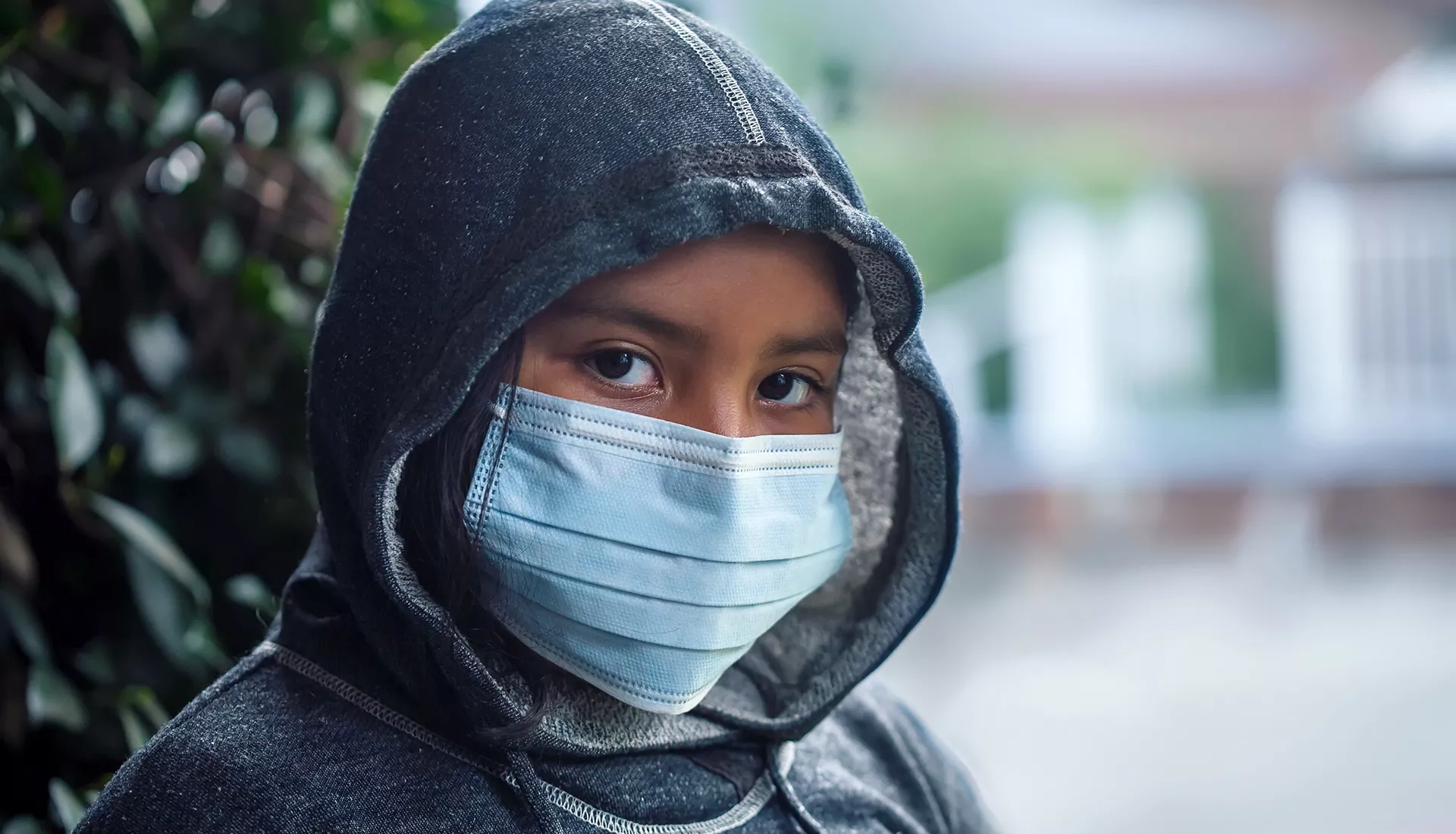Key Takeaways
- The U.S. set a global record Monday January 3 with 1 million new COVID cases reported in a single day.
- Most schools welcomed students back into their buildings after the holiday break.
- The Biden Administration will provide 10 million free tests each month to help schools stay open.
High school English teacher Julie Holderbaum is glad to be back in the classroom in Minerva, Ohio, but admits it’s a little nerve wracking as the Omicron variant of COVID-19 surges.
“I’d feel a lot better if we had a mask mandate,” she says. “We were in person throughout the last academic year and masks are what helped us avoid going to remote learning.”
Educators agree that in-person instruction is the best learning environment and the vast majority of schools welcomed students back into their buildings this week after the holiday break. But some schools sent notices asking for patience and flexibility with school staff shortages resulting from the spread of COVID over the holidays, and some districts – including Atlanta, Georgia, Ann Arbor, Michigan, and Newark, New Jersey – made the call to temporarily cancel in-person learning.
“The lives of all of our students mean more to me than anything else, especially since three of them are actually mine,” said Newark Board of Education President Dawn Haynes in a statement. “We will do everything to protect our children in this fight against this horrible virus and we will get back to in-person instruction as soon as possible.”
The Biden Administration's announcement to provide 10 million free tests to schools each month will help.
The U.S. set a global record Monday January 3 with 1 million new COVID cases reported in a single day as the highly contagious Omicron variant spreads across the nation.
Michigan also set a daily record of cases January 3 and the Pontiac, Michigan, school district announced last week that it would conduct virtual instruction until January 18th.
Pontiac High School eleventh grade English and ninth grade history teacher Melanie Ward says her community has one of the lowest vaccination rates in the county.
“I was relieved that we wouldn’t be exposed to all of the germs coming back into the building, especially after I heard from our high schoolers about what they did on New Year’s Eve or how many friends and family they gathered with over the break,” says Ward.
Still, she worries about the impact of remote learning, especially after nearly two years of struggle with the pandemic. Some of her students didn’t log on and she reached out to their parents, contacting at least seven families on Tuesday, their first day back.
There were various reasons students missed class, but Ward says the families she spoke to were actually relieved about the call to go remote as cases rise. Some students also expressed relief, particularly one whose father passed away from COVID just before the break.
“I had one student who logged off early today to go get the booster,” she says. “I am urging all of my students to get vaccinated and boosted and to not listen to everything they hear on social media. I tell them I got three shots, and I’m still here!”
Ward has also been encouraging her students to come to her with any questions or concerns, not just about school but about the pandemic and getting vaccinated.
“I stress to my students to get vaccinated, to stay home during this time, and to always wear a mask,” she says.
Julie Holderbaum has the same message for her students in Ohio.
“I tell them to be as cautious as you can be,” Holderbaum says. “That’s the best we can do.”
She’s not in favor of going remote because of the enormous difficulty it poses for students, families, and educators and she believes the best education happens in person, but says she understands why some schools have chosen to to go remote during the current surge.
“I’d feel safer if I was working from home and not in contact with 100 kids a day,” she says. “All educators want to do whatever we can to stay in person, but it’s such a tricky line to walk.”
Everyone is exhausted by the pandemic, Holderbaum says, especially educators. She acknowledges the frustration of parents, but teachers are feeling pressure from all sides.
“Teaching has always been a challenging job and COVID has just exacerbated it,” she says. “Everything is a new decision. We still decide how to teach a lesson the best way for learning and engagement, but now we also decide how to teach and be COVID safe.”
For now, that means no group projects, no partner work, no large assemblies. The high school is still planning on holding its popular Homecoming Dance at the end of next week, but after the first day there were already reports of at least one new COVID case.
“In two weeks we could have many students and staff sick with COVID,” Holderbaum says. “Everything is in flux.”


